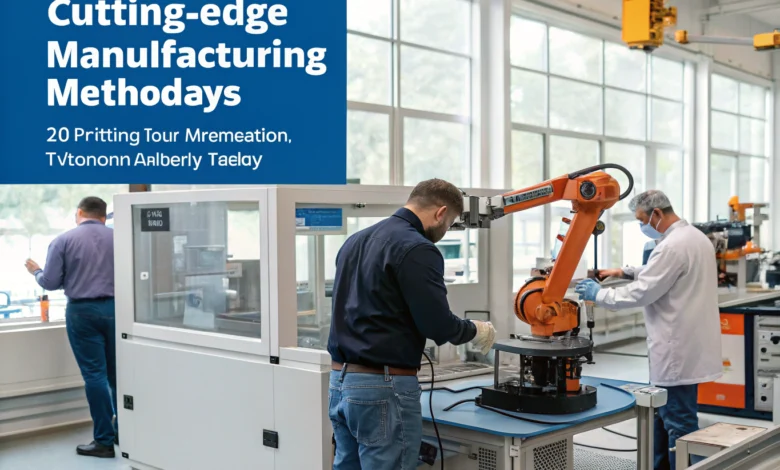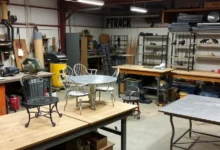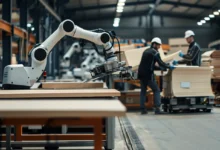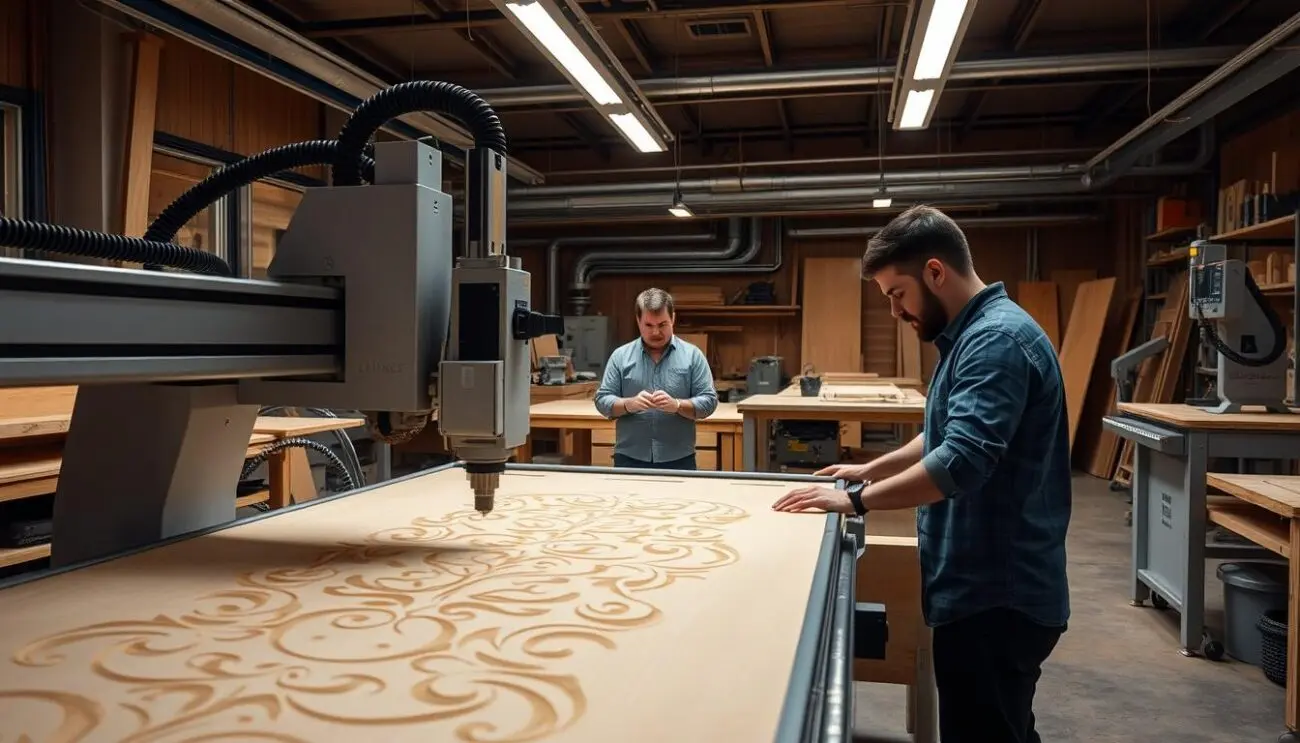7 Cutting-Edge Manufacturing Methods Transforming Industry Now
Are you looking to stay ahead in the ever-evolving manufacturing landscape? The manufacturing industry is experiencing a revolution unlike anything we’ve seen before. Traditional production methods are being rapidly replaced by innovative manufacturing technologies that enhance efficiency, reduce waste, and create products that were once thought impossible.
In this comprehensive guide, we’ll explore seven Cutting-Edge Manufacturing Methods that are reshaping industries worldwide. Whether you’re a production manager seeking to modernize your facility or a business owner considering new manufacturing approaches, these cutting-edge techniques offer competitive advantages that can’t be ignored.
The Evolution of Modern Manufacturing
Manufacturing has come a long way from the early days of mass production. Today’s advanced production techniques represent the culmination of decades of innovation, scientific breakthroughs, and technological development. The journey from manual craftsmanship to today’s smart factories illustrates humanity’s remarkable capacity for industrial evolution.
The Fourth Industrial Revolution, or Industry 4.0, has dramatically accelerated the pace of change in manufacturing methodologies. This digital transformation has integrated physical production systems with digital technologies, creating unprecedented opportunities for efficiency, customization, and product development.
According to a report by Deloitte, companies implementing advanced manufacturing methods have seen productivity increases of up to 30% and quality improvements of up to 25%. These aren’t just incremental improvements—they represent fundamental shifts in how products are conceptualized, designed, and produced.
Let’s dive into the seven manufacturing methods that are leading this transformation.

1. Additive Manufacturing: Beyond Traditional 3D Printing
Additive manufacturing, commonly known as 3D printing, has evolved from a prototyping tool to a full-scale production methodology. This process builds objects layer by layer, using materials ranging from plastics and metals to ceramics and even biological materials.
Key Innovations in Additive Manufacturing:
- Metal 3D Printing: Technologies like Direct Metal Laser Sintering (DMLS) and Electron Beam Melting (EBM) have made it possible to print complex metal parts with exceptional strength-to-weight ratios.
- Multi-Material Printing: Advanced systems can now print using different materials simultaneously, enabling products with varied properties in a single build.
- Large-Scale Additive Manufacturing: Enormous 3D printers can now produce components measuring several meters in size, opening doors for construction, aerospace, and automotive applications.
The aerospace industry has been one of the earliest adopters of industrial 3D printing, with companies like GE Aviation producing fuel nozzles that reduce part count from 20 components to just one—while being 25% lighter and five times more durable.
“Additive manufacturing allows us to create components that were previously impossible to manufacture using traditional methods, enabling breakthrough performance improvements.” – Dr. John Barnes, Founder of The Barnes Group Advisors
Real-World Impact:
The healthcare sector has embraced additive manufacturing for producing patient-specific implants, surgical guides, and anatomical models. Companies like Stryker have developed 3D-printed titanium implants with porous structures that promote bone ingrowth—something impossible with conventional manufacturing methods.
2. Advanced Robotics and Collaborative Manufacturing
The manufacturing floor is being transformed by a new generation of robots that work alongside human workers rather than replacing them. These collaborative robots, or “cobots,” represent a paradigm shift in production line automation.
Key Features of Modern Robotic Manufacturing:
- Human-Robot Collaboration: Safety features like force feedback sensors allow robots to operate without safety cages, working directly with human colleagues.
- Artificial Intelligence Integration: Modern robots learn from experience, adapting to new tasks without extensive reprogramming.
- Flexible Automation: Quick-change end effectors and vision systems enable robots to handle multiple tasks and product variations.
According to the International Federation of Robotics, global installations of industrial robots reached 384,000 units in 2020, with collaborative robots showing the fastest growth rate in the sector.
Implementation Case Study:
BMW’s Spartanburg plant in South Carolina employs collaborative robots that work alongside human workers to install sound insulation in vehicle doors. This human-robot collaboration has improved ergonomics for workers while increasing production efficiency by 15%.
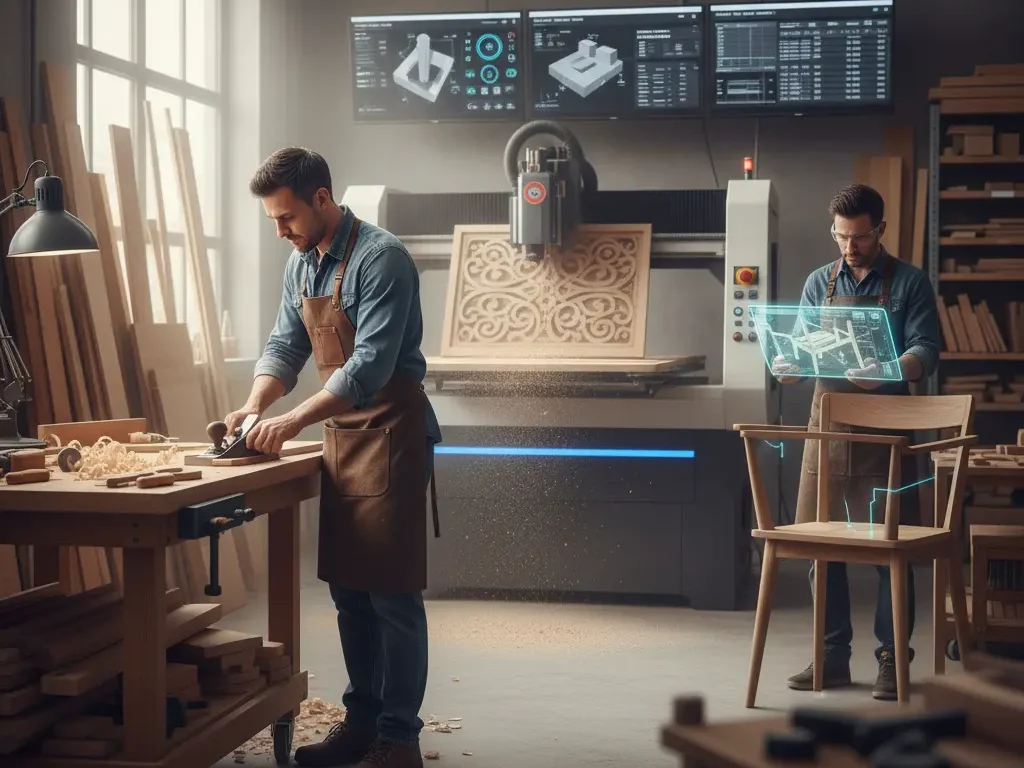
3. Digital Twin Technology and Virtual Manufacturing
Digital twin technology creates virtual replicas of physical products, production processes, or entire manufacturing facilities. These digital models simulate real-world conditions, allowing engineers to test, optimize, and troubleshoot manufacturing methods before implementing them physically.
Applications of Digital Twin Technology:
- Process Optimization: Identifying bottlenecks and inefficiencies before they impact physical production.
- Predictive Maintenance: Anticipating equipment failures before they occur by analyzing virtual performance against real-time data.
- Virtual Commissioning: Testing new production lines in the digital environment before physical installation.
A study by Gartner predicts that by 2023, 70% of manufacturers will be using digital twins, resulting in a 10% improvement in effectiveness.
Digital Manufacturing in Action:
Siemens’ “Digital Enterprise” platform enables companies to create comprehensive digital twins of their products and production lines. One client, a commercial vehicle manufacturer, reduced their product development time by 30% while cutting physical prototyping costs by 40%.
4. Smart Manufacturing and IoT Integration
Smart manufacturing leverages the Internet of Things (IoT) to create connected production environments where machines, systems, and products communicate with each other and with management systems.
Key Components of Smart Manufacturing:
- Sensor Networks: Thousands of sensors monitor everything from machine performance to environmental conditions.
- Real-Time Analytics: Processing massive data streams to provide actionable insights.
- Autonomous Decision-Making: AI systems make real-time adjustments to optimize production flows.
McKinsey research indicates that IoT applications in manufacturing could generate economic value of $1.2 to $3.7 trillion annually by 2025.
Smart Factory Implementation:
Bosch’s state-of-the-art facility in Stuttgart, Germany, exemplifies smart manufacturing with over 10,000 sensors transmitting data throughout the production line. This connectivity has improved production efficiency by 25% and reduced energy consumption by 30%.
5. Nanotechnology in Manufacturing
Manufacturing at the nanoscale—working with materials and structures at dimensions between 1 and 100 nanometers—is opening new frontiers in product development and manufacturing processes.
Revolutionary Applications:
- Nanostructured Materials: Creating metals, ceramics, and polymers with enhanced properties like super-strength, self-healing capabilities, or extreme heat resistance.
- Nanofabrication: Building electronic components at atomic and molecular scales.
- Nanocoatings: Applying ultra-thin layers that provide water repellency, antimicrobial properties, or enhanced durability.
The global nanotechnology market is projected to reach $125 billion by 2024, with manufacturing applications driving the majority of growth.
Industry Impact:
Samsung and other electronics manufacturers utilize nanofabrication techniques to produce semiconductors with increasingly smaller feature sizes, thereby enabling more powerful and energy-efficient electronic devices. In automotive manufacturing, companies like PPG Industries develop nanostructured coatings that enhance corrosion resistance and maintain appearance longer.
6. Sustainable and Green Manufacturing Methods
Environmental concerns are driving manufacturers to adopt greener production techniques that minimize resource consumption and environmental impact while maintaining or improving product quality.
Key Sustainable Manufacturing Approaches:
- Closed-Loop Manufacturing: Systems that recapture and reuse materials, water, and energy.
- Biomanufacturing: Using biological systems to produce materials and chemicals with reduced environmental impact.
- Energy-Efficient Production: Advanced systems that dramatically reduce energy requirements.
| Traditional Manufacturing | Green Manufacturing |
|---|---|
| Linear resource flow | Circular resource flow |
| High energy consumption | Energy optimization |
| Substantial waste | Minimal waste |
| Chemical-intensive | Bio-based processes |
A study by the Manufacturing Institute found that 72% of manufacturers have increased their sustainability investments, with 57% citing competitive advantage as a primary driver.
Sustainability Success Stories:
Interface, a global commercial flooring company, implemented closed-loop manufacturing systems that have reduced water usage by 90% and landfill waste by 91%. Their products now contain up to 100% recycled content, demonstrating that sustainability and profitability can go hand-in-hand.
7. Hybrid Manufacturing Systems
Hybrid manufacturing combines additive and subtractive manufacturing methods in a single integrated system, offering unprecedented flexibility and efficiency.
Advantages of Hybrid Manufacturing:
- Process Consolidation: Reducing production steps and handling requirements.
- Enhanced Geometric Capabilities: Creating complex internal features impossible with traditional methods.
- Rapid Customization: Enabling cost-effective production of highly customized parts.
Research from the International Journal of Advanced Manufacturing Technology shows that hybrid manufacturing can reduce production time by up to 35% for complex components.
Industrial Applications:
DMG Mori’s LASERTEC 65 3D hybrid system combines laser deposition welding and 5-axis milling in a single machine. This technology has been adopted by companies in the tool and die industry to produce complex molds with conformal cooling channels—improving injection molding efficiency by up to 40%.
The Future of Manufacturing: Convergence and Integration
The true power of these advanced manufacturing methods emerges when they converge. The integration of multiple cutting-edge technologies creates synergistic effects that are transforming production capabilities.
Consider a modern aerospace component manufactured using:
- Digital twin simulation to optimize design
- Additive manufacturing for complex internal structures
- Nanotechnology-enhanced materials
- Robotic finishing and assembly
- IoT sensors for in-service monitoring
- Sustainable production methods
This convergence of manufacturing methodologies creates products that are lighter, stronger, more efficient, and more sustainable than ever before.
Implementing Advanced Manufacturing Methods: Practical Considerations
For companies looking to adopt these innovative manufacturing approaches, several key considerations should guide the implementation strategy:
- Start with clear objectives: Define what you hope to achieve through advanced manufacturing adoption.
- Conduct a thorough assessment: Evaluate your current manufacturing capabilities against industry benchmarks.
- Develop a phased implementation plan: Begin with pilot projects that demonstrate value quickly.
- Invest in workforce development: New manufacturing methods require new skills and knowledge.
- Build a supportive ecosystem: Partner with technology providers, research institutions, and other stakeholders.
According to PwC research, companies that take a strategic approach to implementing advanced manufacturing methods achieve ROI 50% faster than those adopting technologies in an uncoordinated fashion.
Conclusion: Embracing the Manufacturing Revolution
The seven cutting-edge manufacturing methods we’ve explored represent more than just technological innovations—they signal a fundamental shift in how we conceive of production and industry. Companies that embrace these advanced production techniques gain competitive advantages through enhanced quality, reduced time-to-market, greater customization capabilities, and improved sustainability.
As manufacturing continues to evolve, the distinction between physical and digital, between human and machine, becomes increasingly blurred. This convergence creates unprecedented opportunities for companies willing to invest in transformation.
The future belongs to manufacturers who can successfully integrate these innovative manufacturing methods into their operations, creating production systems that are not only more efficient but also more responsive, sustainable, and capable than ever before.
Frequently Asked Questions
What is the most cost-effective advanced manufacturing method for small businesses?
Collaborative robotics often provides the best entry point for small manufacturers. Modern cobots are relatively affordable (starting around $20,000-$50,000), require minimal infrastructure changes, and can be redeployed for different tasks. They deliver quick ROI through labor savings, quality improvements, and increased throughput without requiring the substantial investment of fully automated systems.
How does IoT integration improve manufacturing efficiency?
IoT in manufacturing creates connected environments where real-time data flows from equipment, materials, products, and systems. This connectivity enables predictive maintenance (reducing downtime by 30-50%), optimized energy usage (typically saving 10-20% on energy costs), automated quality control, and streamlined inventory management. The continuous data collection also supports ongoing process improvement through advanced analytics.
What skills are needed for workers in advanced manufacturing environments?
The modern manufacturing workforce needs a blend of technical and soft skills, including data literacy and basic programming knowledge, understanding of automated systems, problem-solving abilities, adaptability, and collaboration skills for human-robot teamwork. Many manufacturers are partnering with community colleges and technical schools to develop training programs that address these needs.
How can companies measure ROI from implementing advanced manufacturing methods?
Key metrics for measuring advanced manufacturing ROI include: reduction in production cycle time, decrease in defect rates, improvement in first-pass yield, reduction in energy consumption per unit, decrease in material waste, increase in equipment uptime, and reduction in inventory carrying costs. Companies should establish baseline measurements before implementation to accurately track improvements.
What regulatory considerations impact advanced manufacturing adoption?
Regulatory factors vary by industry and region but commonly include: worker safety standards for human-robot collaboration, data security and privacy regulations for connected systems, environmental compliance for new production processes, intellectual property considerations for digital manufacturing files, and quality validation requirements for critical components. Companies should engage with regulatory experts early in the implementation process.
How are advanced manufacturing methods affecting supply chains?
Advanced manufacturing is enabling more distributed, flexible production models. Technologies like 3D printing allow for on-demand, localized production that reduces logistics costs and inventory requirements. Digital manufacturing networks connect capacity with demand in new ways, while smart manufacturing enables greater visibility throughout the supply chain. These changes are increasing resilience and responsiveness while potentially reducing the carbon footprint of production and distribution.
What is the relationship between advanced manufacturing and sustainability?
Advanced manufacturing methods often inherently support sustainability through: material efficiency (additive manufacturing can reduce material waste by up to 90%), energy optimization (smart systems minimize energy consumption), extended product lifecycles (through improved quality and repair capabilities), and circular economy enablement (digital manufacturing facilitates remanufacturing and recycling). Many companies find that advanced manufacturing investments simultaneously deliver financial benefits and environmental improvements.
Trusted Sources for Further Reading
- National Institute of Standards and Technology (NIST) – Advanced Manufacturing Portal [nofollow]
- McKinsey & Company – Manufacturing & Supply Chain Insights [nofollow]
- MIT Technology Review – Manufacturing Innovation [nofollow]
- World Economic Forum – Fourth Industrial Revolution [nofollow]
- Deloitte – The Future of Manufacturing [nofollow]
- Manufacturing.gov – Advanced Manufacturing National Program Office [nofollow]
- Association for Manufacturing Technology [nofollow]

